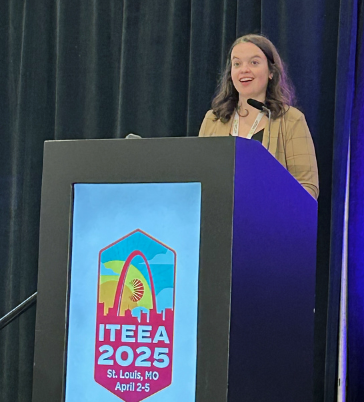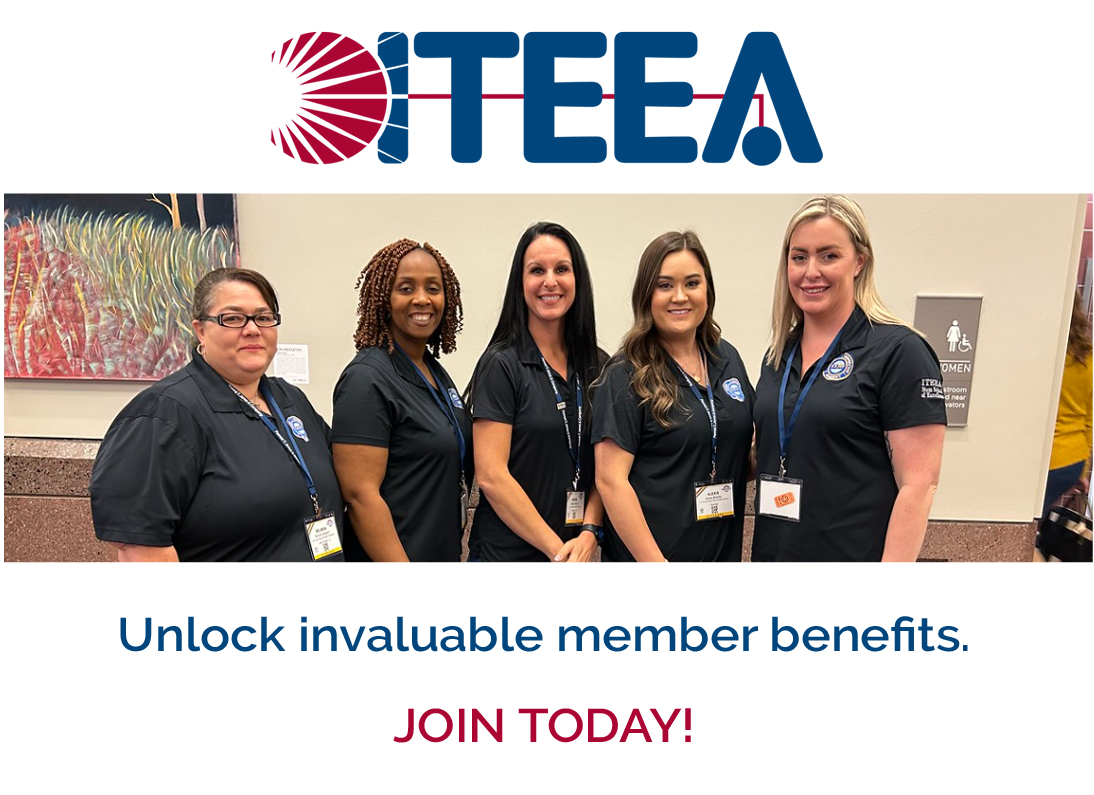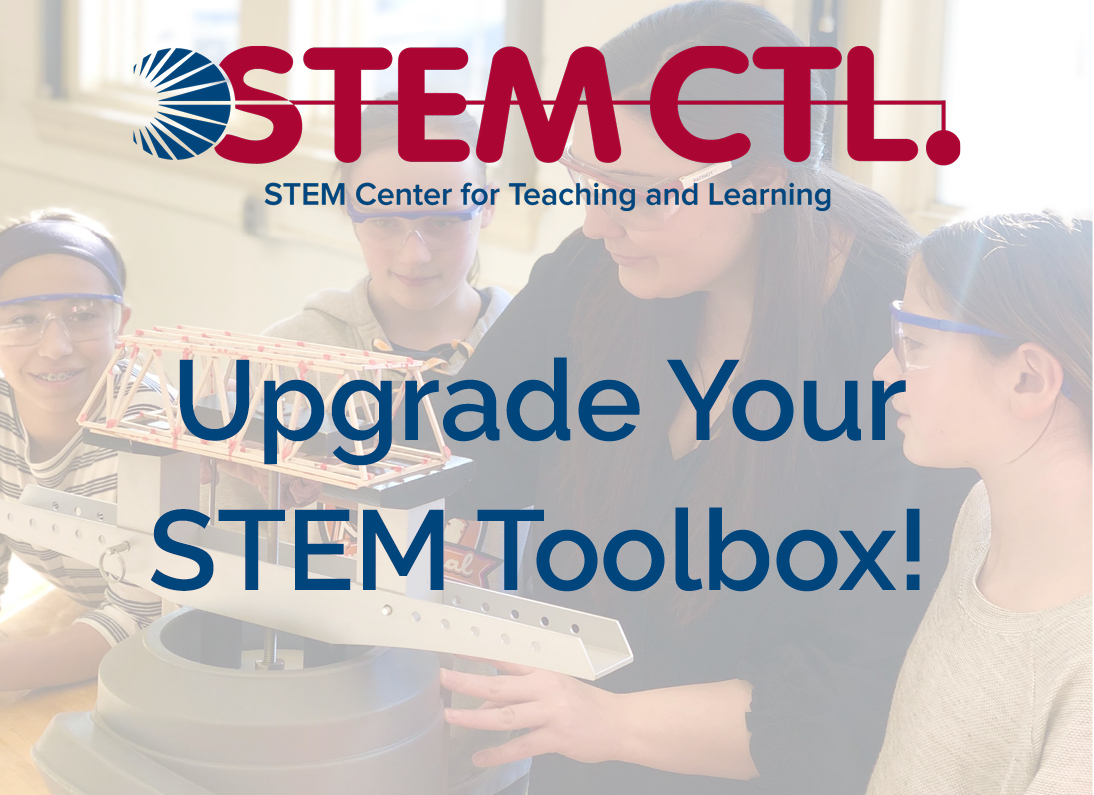2025-26 President's Message
Molly Miller, EdD, DTE
 First and foremost, I am thankful to you, as ITEEA members, for your trust and support in electing me to the position of president. For those of you I have not met or worked with directly, I look forward to doing so in the future. I’d like to take this opportunity to tell you a bit about myself before sharing the ways in which I think about the future of our association and the advancement of our field.
First and foremost, I am thankful to you, as ITEEA members, for your trust and support in electing me to the position of president. For those of you I have not met or worked with directly, I look forward to doing so in the future. I’d like to take this opportunity to tell you a bit about myself before sharing the ways in which I think about the future of our association and the advancement of our field.
Who Am I?
I am a relentless overachiever. In elementary school, I was labelled as a gifted learner and spent the rest of my school years living up to the label. Grades, learning, and content came easily. I have bene-fitted from exceptional technology and engineering (T&E) educators as a student at Cedar Crest High School and Millersville University. My enduring goal is to make as significant a difference in the lives of my own students as my educators have made in mine.
I will never forget my very first technology education class in middle school. I saw it as the class where simply being smart was not enough. The course, teacher, and projects pushed me to not just know information, but how to apply it. I was challenged in new ways and from that point, I could not get enough. I changed school districts in middle school, but that challenging experience had a silver lining when my new school offered the Technology Student Association (TSA) as an after-school club. It’s not an exaggeration to say that becoming a member of TSA changed my life. I found my love for technology, and “my people” in the association. I attended many national conferences and was elected as a state officer twice.
I attended Millersville University to become a T&E educator. It was there that I first encountered ITEEA through TEECA. This was like TSA at the college level for someone who already received great benefits from the camaraderie, competition, and leadership opportunities. Since graduation, I have spent the past 12 years as a high school T&E educator at Penn Manor High School in Lancaster, PA. I have taught everything from woodworking to electronics, drafting to product design, as well as applied physics and computer science. Additionally, I have spent the past six years as an adjunct professor at Millersville University within both the undergraduate teacher preparation program and the graduate program. I am so very passionate about teaching and engaging with students at a variety of levels.
“We have reached the one-quarter mark in terms of the 21st century, and I feel a profound reflection is warranted. I look at this milestone as the end of the first marking period for the century. As a teacher, I encourage my students to use that transition as a time to assess their progress and map changes for the future.“
Beyond the classroom, I have had some great opportunities to grow professionally and give back to our field along the way. I have served on the presidential line of the Technology and Engineering Education Association of Pennsylvania (TEEAP) and the Pennsylvania Technology Student Association (TSA). I have worked on the development of the Pennsylvania Science, Technology, Engineering, Environmental Literacy, and Sustainability (STEELS) standards. Within ITEEA, I was a part of the 21st Century Leadership Academy, a program about which I cannot speak highly enough. I have no doubt that I would not be where I am in this association if it weren’t for that opportunity.
While I am passionate about T&E education, I am even more enthusiastic about education as a whole. I care deeply about the learning and take-aways that impact students for life, such as fostering critical thinking, persistence, and many other dispositional skills. I feel that T&E education is perfectly suited to be an engaging, meaningful, not to mention fun, way for teachers to achieve this.
I remain engaged, energetic, and passionate in the classroom through refueling myself outside of the classroom. I am a mom of two, my son Landry is 9 and my daughter Scarlett is 6. My interests and hobbies are widely varied and while I love working with my hands-on projects and artifacts, there’s so much more that keeps me smiling, including dance, reading, and even learning French (though my progress has been slow) I also love philosophy, strategy games, and just hanging out with friends. I’m not one to stay stagnant long and am always looking for the next thing on the horizon.
Where Are We?
I view my term as ITEEA president with that same eye on the horizon. It is a challenge to look forward without first looking back and reflecting. In the new year, I’ve been contemplating the significance of 2025. We have reached the one-quarter mark in terms of the 21st century, and I feel a profound reflection is warranted. I look at this milestone as the end of the first marking period for the century. As a teacher, I encourage my students to use that transition as a time to assess their progress and map changes for the future. As individuals with vested interest in the growth and development of T&E education, we must critically examine our own trajectory. Have we, as a field, achieved the ambitious goals we set for ourselves at the dawn of this century? Have we truly embraced the transformative potential of T&E to empower learners and shape a better future?
The 20th century, for our field, was a period of remarkable growth. From its humble beginnings as manual training, T&E evolved, grappling with societal shifts and technological advancements. We witnessed the rise of industrial arts, the emergence of vocational education, and the gradual integration of technology into the curriculum.
What Do We Believe?
Recently, as a mentor and close colleague turned friend was cleaning out his office and preparing for retirement, he passed down some of his resources to me. Along with the boxes of books and reference materials was a single framed document. I became the owner of a copy of the Industrial Arts Teachers’ Creed authored by Alfred P. Smith out of Indianapolis (Smith, n.d.). While there is no date on the artifact and little can be found online, based on the timeline of Mr. Smith’s career and activities, my best estimate is that it was authored sometime in the late 1950s or 1960s. If you know more, please reach out, I’d be happy to learn more. Smith was a longtime passionate educator who also served as the supervisor for Industrial Arts in the Indianapolis Public Schools system and president of the state association.
I am not sure that I have ever read an artifact that more concisely shares my own viewpoint on T&E education, and education as a whole. The aforementioned shifts in the field throughout the 20th century appear to have been guided by a set of core values eloquently articulated within the creed. While this is a decades-old thought shared, I believe that if we replace the wording of “Industrial Arts” with “Technology and Engineering Education,” we are left with a creed that is still deserving of reflection and deep thought in 2025. In the following sections, I hope to share that creed with you stanza by stanza while breaking down its significance to me as well as our association.
BECAUSE I am entrusted with the education of youth, I will further my own education through advanced courses, experience gained in my assignment, association with fellow educators, industrial contacts and experience, and in the civic and cultural life of my community… (Smith, n.d.).
This emphasizes the importance of continuous professional development and a commitment to lifelong learning. These are key tenets of ITEEA and what it provides to its members. Have you taken advantage of attending a conference? Have you engaged with the talented individuals at the STEM Center for Teaching and Learning? Beyond this, have you given thought to the fact that you are “entrusted with the education of youth” and considered what that means for your own outreach and continuous improvement? The creed recognizes that our effectiveness as educators is directly linked to our own growth and engagement with the world around us.
BECAUSE I am a member of a profession, I will be professional, courteous, and tolerant in my relations with students, parents, fellow educators, and the public… (Smith, n.d.).
This tenet underscores the importance of ethical conduct and respectful interactions with all stakeholders. It emphasizes the importance of building positive relationships with students, colleagues, and the community, fostering a culture of collaboration and mutual respect. I am so grateful for the relationships that I have built through engagement at ITEEA events, conferences, webinars, and more. If that doesn’t include you yet, I invite you to say hello if you see me or reach out to connect.
BECAUSE I appreciate the re-wards the teaching profession offers me, I will become a member of, and actively work in the local, state and national professional organizations … (Smith, n.d.).
This explicitly emphasizes the importance of professional engagement and collective action. By actively participating in professional organizations like ITEEA, we can connect with other educators, share best practices, and advocate for our profession. What is shared in this writing goes beyond paying for membership and occasionally reading an article. What does it mean to be an active member? Have you engaged with an ITEEA council? There are five councils within the association that represent various groups and interests, join like minds and discuss, problem solve, and work together. Have you nominated an excellent colleague for a recognition or award? Have you attended our annual conference? What about locally? Does your state have a professional association and are you engaged at that level? If yours does not, why not get together with colleagues in your area and start from the ground up?
BECAUSE I believe that Industrial Arts Education is valuable for all students, I will so plan and evaluate my curriculum and methods that all who elect my courses will know that their education has been enhanced thereby… (Smith, n.d.).
This highlights the core belief that T&E education is valuable for all students, regardless of their back-ground or career aspirations. It emphasizes the importance of creating engaging and relevant learning experiences that empower students to develop critical-thinking, problem-solving, and creative skills. As a lover of deep thinking and mindful reflection, I am always asking myself if what I am teaching truly matters. Is it what my students need for to-day’s world? I encourage you to do the same.
BECAUSE I believe that Industrial Arts has a prominent role in education, I will become thoroughly versed in educational philosophy, so that I may make others aware of the unique contribution made to education by Industrial Arts. (Smith, n.d.).
This emphasizes the importance of advocating for the value of T&E education. We must effectively communicate the unique contributions of our field to the broader educational landscape, demonstrating its relevance in preparing students for the challenges of the 21st century. As a self-proclaimed nerd, philosophy is one area of study that gives me joy and excitement. I am not asking for you to find that same love, but I am encouraging you to consider the role of T&E education over the years and the role that you believe it should take on as we continue into this second marking period of the 21st century.
Who Are We Now?
This creed, a testament to the values of our predecessors, serves as a valuable guidepost. However, as we navigate the complexities of the 21st century, we must consider whether it fully reflects the evolving nature of our field. I would like to see our association consider what a creed of today’s day and age would look like in our field. This process of developing a new creed will not only help us articulate our shared values but also serve as a catalyst for internal reflection and dialogue. It will provide a framework for our collective efforts to advance the field of T&E education and ensure that we are effectively preparing our students for the challenges and opportunities of the future.
While we have made significant strides since the articulation of the Industrial Arts Teachers’ Creed, we must also acknowledge the internal challenges that have hindered our progress. As the “Who Are We?” issue of Technology and Engineering Teacher (2017) poignantly highlighted, we grapple with internal disagreements regarding the scope and purpose of our field. These disagreements, while inevitable in a field as diverse as ours, can sometimes paralyze us and hinder our ability to effectively advocate for our students and our profession.
Drawing inspiration from the wisdom of Nietzsche, who argued that “truth arises from the clash of ideas,” and Mark Twain, who assert-ed that “the man who never made a mistake never tried anything new,” we must embrace these internal dialogues as opportunities for growth. We must actively seek common ground, find areas of consensus, and forge a unified vision for the future of T&E education.
Just as students are encouraged to reflect on their performance at the end of the first marking period and make necessary adjustments to their study habits, we too must critically examine our own practices and make meaningful shifts. We must:
- Reimagine the curriculum: Move beyond outdated, skill-and-drill approaches and embrace project-based learning, design challenges, and real-world applications that inspire and engage students.
- Prioritize equity and inclusivity: Ensure that all students, regardless of their background, have equal access to high-quality T&E education. Create a learning environment that is welcoming and supportive of all learners, including girls, underrepresented minorities, and students with disabilities.
- Encourage dispositional teaching and learning: Equip students with the critical thinking, problem-solving, creativity, and communication skills they need to thrive in a rapidly changing world.
- Foster innovation and creativity: Encourage experimentation, risk-taking, persistence in the face of struggle, and the development of new ideas and technologies.
- Advocate for our profession: Effectively communicate the value of T&E education to policymakers, administrators, parents, and the broader community.
To achieve these goals, we must strengthen our collective voice as a profession. I believe that a strong professional association is crucial to our success. ITEEA, with its rich history and dedicated membership, provides a vital platform for net-working, collaboration, and professional development. By actively engaging with ITEEA, attending conferences, participating in professional development opportunities, and contributing to publications, we can collectively advance the field of T&E education.
I am reminded of a profound experience I had at a recent conference. I traveled one thousand miles, eager to connect with fellow educators and exchange ideas. To my delight, I encountered a kindred spirit, an educator from Germany, who had traveled five times farther to attend this conference. Our conversations were deeply enriching and intellectually stimulating. This experience underscored the power of human connection and the importance of sharing ideas and perspectives across borders, including time zones, geographical distance, and language barriers. This is the power of an association with international reach. I would love to see that reach grow, strengthen, and enrich engagement opportunities from outside of the United States.
As we embark on the second quarter of the 21st century, let us strive to emulate this spirit of collaboration and intellectual exchange. Let us embrace the diversity of thought within our field, recognizing that different perspectives and approaches can enrich our practice and enhance student learning. Let us work together to build a more just, equitable, and innovative future for T&E education, one that empowers students to become the next generation of innovators, problem-solvers, and leaders.
In closing, I would like to leave you with a reflection from Winston Churchill: “The price of greatness is responsibility.” As educators, we bear the responsibility of shaping the minds of future generations. Let us embrace this responsibility with passion, dedication, and an unwavering commitment to excellence.
References
de la Paz, K. B. (Ed.). (2017). Who are we? [Special issue]. Technology and Engineering Teacher, 76(4).
Smith, A. P. (n.d.). The Industrial Arts Teachers’ Creed. Indianapolis, Indiana.
Molly Miller, EdD, DTE is a high school technology and engineering educator at Penn Manor High School in Lancaster, PA as well as an adjunct instructor at Millersville University. She serves as ITEEA’s 2025-2026 president.


